Mastering Fraction Conversion to Decimal for Kids
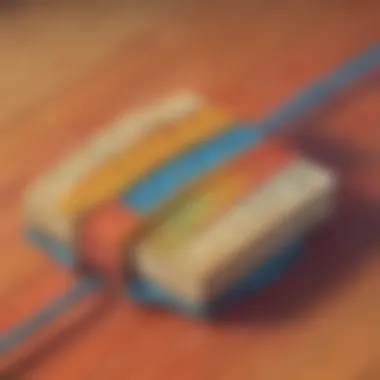
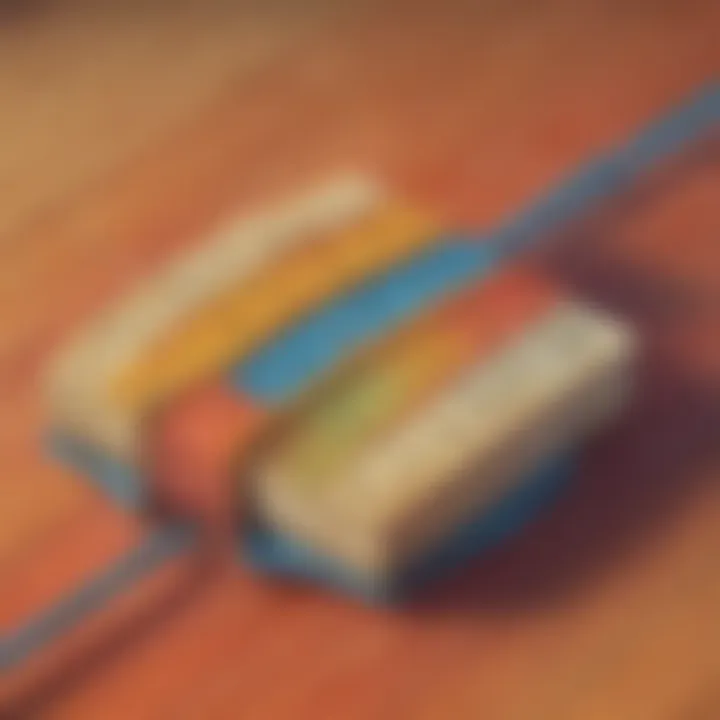
Intro
Converting fractions to decimals is an essential skill that plays a crucial role in both academic settings and daily life. This process simplifies numerical expressions and allows for easier comparisons. Understanding how to perform these conversions opens doors to more advanced math concepts. With a solid grasp of fractions and decimals, learners can tackle various practical applications, from budgeting to cooking.
In this article, we will cover the fundamental methods for converting fractions to decimals, emphasizing clarity and practical examples. Even young children can learn and appreciate these concepts, as they are foundational in their mathematical journey.
Creative Activities
To enrich the learning experience around fraction-to-decimal conversion, engaging creative activities can be very beneficial. Here, we present ideas that children can replicate, enabling them to grasp these concepts in a hands-on manner.
Craft Ideas
- Fraction Charts: Children can create visual aids. These charts can show fractions alongside their decimal equivalents, which helps in visual learning.
- Decimal Bingo: Prepare bingo cards that have decimal numbers on them. Use fractions as the calling numbers, allowing children to mark their cards when they convert the fractions.
- Paper Plate Pizzas: Use paper plates to represent fractions. For example, dividing a plate into four sections can help children visualize 1/4 and see how it relates to 0.25.
Step-by-Step Guides
- Drawing Fraction Circles: Begin with a circle. Divide it into equal parts, representing the fraction. Label each part's decimal equivalent next to it.
- Creating a Decimal Line: Draw a number line. Place fractions and their decimal forms along this line to illustrate their relationship.
- Setting Up Bingo: Create bingo cards by writing decimal numbers. Prepare fraction slips to call out, prompting conversions.
Educational Value
Educational activities not only make learning fun but also foster comprehension. Craft ideas like fraction charts reinforce theoretical knowledge. Engaging in activities helps children better retain the information. This interaction with the material promotes a deeper understanding of the principles behind conversions.
Fun Quizzes
Quizzes can serve as an excellent tool for reinforcing what children learn about fractions and decimals.
Quiz Topics
The quizzes can cover topics like:
- Basic fraction to decimal conversions
- Identifying equivalent fractions and decimals
- Real-life applications of fractions and decimals
Question Types
Children can experience a variety of question types:
- Multiple choice questions that challenge them to choose the decimal form of fractions.
- Fill-in-the-blank questions that encourage them to complete fractions or decimals.
- True or false statements to help discern common misconceptions.
Knowledge Reinforcement
Quizzes play a vital role in reinforcing knowledge. They can make learning competitive and fun. Engaging with the content through quizzes can improve recall and understanding while also boosting self-confidence.
Fact-Based Articles
Supplementary materials can further enhance the grasp of fractions and decimals through diverse topics.
Topics
Fact-based articles may cover:
- Historical perspectives on numbers.
- Practical uses of decimals in trading and shopping.
- Connections between fractions, decimals, and percentages.
Engaging Content
These articles are structured to present information in a straightforward and interesting manner. Large texts are avoided, focusing instead on digestible chunks that kids can comprehend easily.
Foreword to Fractions and Decimals
The ability to convert between fractions and decimals is not just a mathematical skill; it is a crucial understanding that enhances numerical literacy. This article will explore the foundations of fractions and decimals, illustrating their definitions, relationships, and significance in various contexts. Starting with the basic concepts helps to demystify these numerical forms and reinforces their importance in everyday life as well as in more complex mathematical scenarios.
Definition of Fractions
A fraction represents a part of a whole. It consists of two main parts: the numerator and the denominator. The numerator, found at the top, indicates how many parts we have, while the denominator, located at the bottom, shows how many equal parts the whole is divided into. For example, in the fraction 3/4, 3 is the numerator and 4 is the denominator. Understanding fractions is essential because they allow us to express quantities that are not whole numbers. This understanding lays a foundation for more advanced mathematical operations, especially when dealing with measurements or distributing items evenly.
Definition of Decimals
Decimals are another way to express numbers that are not whole. They use a decimal point to separate the whole number part from the fractional part. For example, 0.25 represents twenty-five hundredths, or 25 out of 100. Decimals can also represent very small quantities, allowing for a more precise expression compared to fractions. Knowing how decimals work not only aids in calculations but also in interpreting numerical data in real-world situations, such as currency or measurements.
Relationship Between Fractions and Decimals

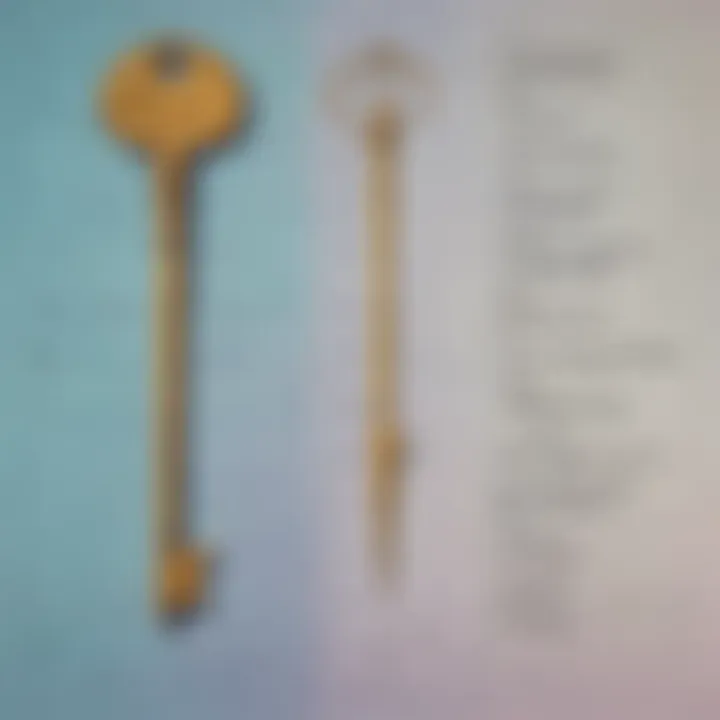
Fractions and decimals are closely intertwined. Each fraction can be converted into a decimal format, and vice versa. For instance, the fraction 1/2 can be expressed as the decimal 0.5. This relationship allows people to switch between the two forms depending on the context, which is particularly useful in mathematical calculations and everyday applications, like shopping or budgeting.
Understanding how to convert fractions to decimals and understanding their relationship is vital for developing mathematical skills and reasoning. It opens up pathways to engage with more complex mathematics and enhance practical understanding in daily activities.
"Mastering the conversion between fractions and decimals leads to greater proficiency in mathematics and better decision-making in everyday situations."
By mastering these concepts, readers can build the skills necessary for higher-level math and practical problem-solving.
Importance of Conversion
The conversion of fractions to decimals holds significant importance in both foundational mathematics and practical applications. Understanding this skill enables individuals to navigate mathematical problems with confidence and precision. Keeping these conversion techniques in mind enhances not only numerical literacy but also improves critical thinking skills. Below are key aspects to recognize regarding the importance of conversion.
"Converting fractions to decimals can simplify calculations and help in making sense of numbers in a more intuitive way."
Applications in Everyday Life
In daily scenarios, fractions often arise in cooking, budgeting, and measurements. For example, when a recipe calls for half a cup of sugar, knowing that this is equivalent to 0.5 cups is vital for correct ingredient ratios. This concept extends to financial matters as well, where understanding decimal representation assists with currency metrics and interest calculations.
Furthermore, when people purchase items during sales that offer discounts in percentages, the ability to convert fractions to decimals allows them to quickly assess final prices. This skill is not merely academic; it nurtures better decision-making and enhances practical life skills for elementary school children and their families alike.
Role in Advanced Mathematics
As students progress in their mathematical journey, the need for understanding fraction and decimal conversion increases, particularly in advanced concepts like algebra and geometry. This foundational skill forms a bridge to more complex ideas such as ratios, percentages, and even calculus at higher education levels.
In advanced mathematics, students often face equations and problems that blend fractions and decimals. A solid grasp of conversion techniques can simplify these mathematical challenges. Consequently, failure to master this skill typically creates hurdles in grasping more complicated mathematical concepts later on. By fostering a deep understanding of fraction-to-decimal conversion early on, learners are better prepared to tackle the complexities of advanced mathematics in their academic future.
Methods of Conversion
Understanding various methods of converting fractions to decimals is crucial for elementary school children as it lays the groundwork for mathematical literacy. Each method has its own advantages and can be suited to different learning styles. By examining these techniques, we aim to provide a clear pathway to mastering conversion and enhance confidence in numeracy skills. Specific methods can simplify complex fractions, making them more accessible.
Dividing Numerator by Denominator
This method involves taking the fraction, where the numerator is the top number and the denominator is the bottom number, and performing a simple division. For example, in the fraction 3/4, you would divide 3 by 4. This method is straightforward and can be performed easily on paper or with a calculator. The main benefit of this approach is its directness—students can see how the fraction translates into a decimal through a single calculation. However, understanding the relationship between the numerator and denominator is essential to avoid errors.
Using Long Division
Long division is a more detailed method for converting fractions to decimals, especially useful for fractions that do not simplify easily. This method involves dividing the numerator by the denominator step-by-step until a remainder is reached. For example, if we convert 1/3, we continuously divide 1 by 3, which will give a result of 0.333, an infinite decimal. Although this method takes more time and effort, it teaches learners about place value and the concept of recurring decimals. It’s important to practice long division to gain fluency and comfort.
Utilizing a Calculator
In today’s digital age, calculators play a significant role in conversion. They provide quick and accurate results, making them a helpful tool for students. By entering the fraction directly into a calculator, learners receive the decimal equivalent almost instantly. This method can particularly benefit those who struggle with manual calculations. However, reliance on calculators must be tempered with an understanding of the underlying principles, as it’s essential to know how the conversion works. This helps foster deeper knowledge and retains the skills necessary for solving mathematical problems.
Understanding these methods equips students with tools to tackle fractions confidently. Each technique has its place in a comprehensive mathematical education.
Examples of Conversion
Understanding how to convert fractions into decimals is a fundamental skill. This section provides concrete examples, illustrating these conversions in a clear and simple manner.
Simple Fractions
Simple fractions are those with a numerator and a denominator that are both whole numbers. For instance, consider the fraction 1/2. To convert this to a decimal, you divide the numerator by the denominator.
- Steps for converting 1/2:
- Numerator: 1
- Denominator: 2
- Perform the division: 1 ÷ 2 = 0.5
Thus, 1/2 equals 0.5 in decimal form. This is a basic yet important conversion that sets the stage for more complex fractions.
Mixed Numbers
Mixed numbers consist of a whole number and a fraction combined, such as 1 3/4. To convert this into a decimal, you must first convert the fraction part into a decimal and then add it to the whole number.
- Steps for converting 1 3/4:
- Convert 3/4 into decimal: 3 ÷ 4 = 0.75
- Add to the whole number: 1 + 0.75 = 1.75
Therefore, 1 3/4 is equal to 1.75 when expressed as a decimal. This method allows learners to handle mixed numbers with confidence.
Complex Fractions


Complex fractions can be more challenging due to their multiple layers. Take the fraction 5/8, which contains larger numbers but still requires the same conversion approach.
- Steps for converting 5/8:
- Numerator: 5
- Denominator: 8
- Perform the division: 5 ÷ 8 = 0.625
This means 5/8 converts to 0.625 in decimal form. Working with complex fractions helps solidify understanding and prepares students for various mathematical scenarios.
"Mastering fraction to decimal conversion helps learners visualize and better understand mathematical relationships."
Through these examples, one can see that fractions can effectively be translated into decimals, enhancing mathematical comprehension. Learning to perform these conversions paves the way for greater proficiency and confidence in both academic and real-world applications.
Common Mistakes in Conversion
Understanding the common mistakes in converting fractions to decimals is vital. These errors can lead to significant misunderstandings in mathematical concepts and hinder a student's progress. By identifying these pitfalls, both students and educators can better navigate the complexities of conversions, ensuring a clear and accurate grasp of the material. This section will cover two prevalent types of mistakes: misunderstanding decimal places and errors with rounding.
Misunderstanding Decimal Places
One common mistake happens when individuals do not fully grasp how decimal places work. A fraction, once converted, can require attention to placement of numbers after the decimal point. For instance, when converting the fraction 1/2, one must recognize that it equals 0.5. However, if a student mistakenly places the digit in the wrong place, they might record it as 5.0 instead of 0.5. This error can lead to incorrect calculations, especially when fractions are part of more complex equations.
To effectively avoid this mistake, practice is necessary. Familiarizing students with the concept of tenths, hundredths, thousandths, and so on, should be reinforced. They need to understand that each position after the decimal point represents a different value, which directly correlates to the fraction being converted.
Here are some tips to clarify decimal placement:
- Use Visual Aids: Charts showing the relationship between fractions and their decimal equivalents can provide clearer insights.
- Practice with Examples: Continuous exercises using varied fractions will help solidify concepts.
- Discuss Errors Openly: Creating an environment where mistakes are discussed can normalize the learning process.
Errors with Rounding
Rounding errors also frequently occur during the conversion from fractions to decimals. When a fraction does not convert neatly into a decimal, students often round the decimal to a certain number of places, which can cause inaccuracies. For example, when converting 1/3, the decimal becomes 0.3333, which can be rounded to 0.33 or 0.34. If the proper context for rounding is not understood, the end result may vary significantly from what is accurate.
Understanding when and how to round correctly is important. Rounding should adhere to specific guidelines, often referred to as rounding rules. Here are some general rules to keep in mind:
- Look at the Next Digit: If it is 5 or greater, round up. If it is less than 5, round down.
- Determine the Required Precision: Know how many decimal places are necessary for the context.
- Consistent Rounding: Maintain the same number of decimal places throughout calculations to reduce confusion.
Mistakes in rounding can affect the accuracy of results in real-life situations. For instance, incorrect financial calculations may lead to loss or gain, and errors in scientific data can lead to faulty conclusions. Thus, understanding rounding is not merely a mathematical skill; it is a life skill.
"Accuracy in conversions is crucial, as it affects not just one's understanding of math but also results in real-life applications."
In summary, focusing on these two common mistakes—misunderstanding decimal places and rounding errors—will enhance students' abilities to convert fractions to decimals effectively. Encouraging continuous practice and providing useful strategies can help minimize these errors and build a strong foundation in understanding both fractions and decimals.
Practicing Conversion Skills
Practicing conversion skills is crucial for anyone learning how to transform fractions into decimals. This practice reinforces understanding and builds confidence. Mastery in this skill not only aids in mathematical tasks but also develops critical thinking. When students encounter fractions in real-life situations, like dividing a pizza, they can effortlessly convert the quantity into a decimal.
When children practice regularly, they become more adept at recognizing patterns and applying methods naturally. Practicing conversion skills ensures that these methods stick, leading to improved accuracy and speed in calculations.
"Regular practice is key to mastering any mathematical concept. It promotes familiarity and confidence."
Exercises for Mastery
Exercises are essential for mastery in converting fractions to decimals. Teachers and parents can create a series of structured problems to enhance learning. A good approach is to mix simple and complex conversions. Here are a few types of exercises:
- Convert simple fractions like 1/2 and 3/4.
- Attempt mixed numbers such as 2 1/3 and 1 2/5.
- Challenge students with complex fractions, for example, 7/8 or 14/25.
These exercises help solidify the concept. It is helpful to provide immediate feedback after the exercises. This feedback helps students understand their errors and correct them promptly.
Utilizing Educational Games
Educational games can make practicing fraction to decimal conversion enjoyable. Games can appeal to children’s competitive spirit while enhancing their learning. Using games also promotes motivation and engagement. Here are some ideas for games:
- Flashcard Games: Create flashcards that feature fractions on one side and their decimal equivalents on the other. Students can quiz each other in pairs or small groups.
- Board Games: Develop a simple board game that incorporates fraction conversion challenges. Players can move forward by answering questions correctly.
- Online Platforms: Websites like Khan Academy offer interactive activities focusing on fractions and decimals.
Utilizing these games allows children to practice in a dynamic and supportive environment, reinforcing their conversion skills effectively. It allows them to learn without the pressure that often accompanies traditional studying.
Tools for Learning
Learning to convert fractions to decimals is essential, not just for academic success but also for everyday applications. Tools for learning this process can significantly enhance comprehension and retention. The right tools simplify complex concepts, enabling learners to grasp and apply their knowledge effectively. In this section, we discuss two valuable resources: Fraction to Decimal Charts and Online Conversion Calculators. Each tool caters to different learning styles and offers unique advantages.
Fraction to Decimal Charts
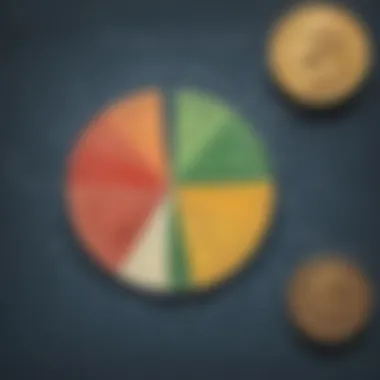
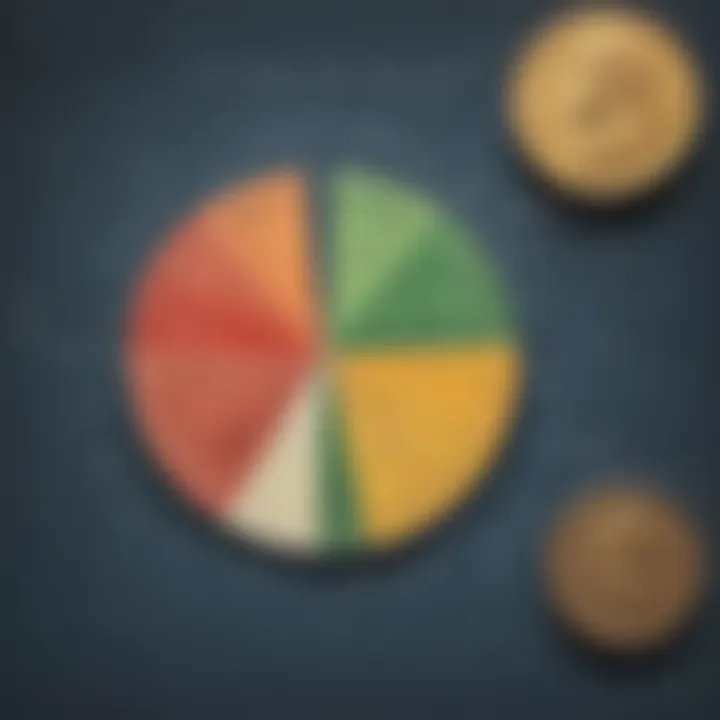
Fraction to decimal charts serve as visual aids that help individuals quickly reference common fractions and their decimal equivalents. These charts simplify the learning process by providing immediate access to pre-calculated conversions. For young learners, having a chart can be helpful because it reduces anxiety related to calculations. Instead of performing division, they can visually match fractions to decimals.
The main benefits of using these charts include:
- Quick Reference: Students can easily find conversions without extensive mathematical operations.
- Accuracy: Charts present precise information, minimizing the risk of errors.
- Visual Learning: Many children have visual learning strengths, making charts effective educational tools.
- Practical Use: Charts can be used in a variety of settings, including homework, tests, or even in cooking and other practical applications.
It's important to note that while charts are a great starting point, they may not cover every possible fraction. Therefore, they should be used in conjunction with other methods for a more comprehensive understanding.
Online Conversion Calculators
In today's digital age, online conversion calculators provide another powerful tool for learning. These calculators allow users to input fractions and receive instant decimal conversions. This immediate feedback can reinforce learning and increase confidence.
Here are some specific advantages of using online calculators:
- Instant Results: Users get immediate answers, reducing waiting time and frustration.
- User-Friendly Interface: Many calculators are designed to be intuitive, making the learning process smooth.
- Accessibility: Online calculators are available on various devices, including smartphones, tablets, and computers, making them easy to use anytime.
- Practice: Students can explore various fractions at their own pace, reinforcing their skills over time.
Despite these advantages, it is important for learners not to become overly dependent on technology. Understanding the underlying principles of conversion is crucial for long-term retention and skill development. Thus, both tools – charts and online calculators – should complement traditional learning methods, such as practicing division or using educational games.
"Understanding tools for learning not only enhances fractional and decimal skills but also fosters confidence in mathematical abilities."
By equipping students with these resources, educators and caregivers can support their journey toward mastering fraction and decimal conversion.
Assessing Understanding
Understanding conversion techniques from fractions to decimals is not just an academic exercise; it is a skill that reinforces mathematical reasoning and problem-solving capacity. Assessing understanding in this regard serves multiple important functions. Firstly, it provides clarity on how well students grasp the conversion methods discussed previously in this article. This clarity is crucial because a solid understanding of these methods directly impacts their confidence in handling fractions and decimals in real-world applications.
In addition, assessments such as quizzes and feedback mechanisms can point out specific areas where students might struggle. This ensures that corrective measures can be timely implemented. For elementary school children, this becomes a critical part of learning, as they often need reinforcement to master such concepts. The assessments should not only measure knowledge but also promote a deeper engagement with the material.
Regular assessments can motivate students to practice more, leading to eventual mastery of the topic. Moreover, tracking progression is essential; it informs educators and parents on the effectiveness of teaching methods and materials used. This can help tailor future instruction to better suit the learning needs of each student.
Overall, assessing understanding in the context of fraction-to-decimal conversion fosters an interactive learning environment where students can feel capable and supported.
Quizzes and Tests
Quizzes and tests are traditional methods of evaluating knowledge and application skills. They play a vital role in gauging a student's ability to convert fractions to decimals accurately. These quizzes often consist of various question types, including:
- Multiple choice questions that test straightforward conversions.
- Short answer questions that require students to show their work.
- Word problems that challenge students to apply their knowledge in context.
In incorporating quizzes, it is best to cover various complexities. For instance, some quizzes can focus on simple fractions, while others include mixed numbers or complex fractions. This variation helps identify the depth of a student's understanding.
Using technology can enhance assessment methods as well. Online quizzes allow for immediate feedback, which can be more engaging for students. They often align well with the interactive nature of modern education.
Feedback and Improvement
Providing constructive feedback after assessments is crucial in the learning cycle. Feedback serves as a tool for improvement, directing students on what they did well and where they need to grow. It can take many forms, like written comments, one-on-one meetings, or classroom discussions.
When educators focus on specific errors or misconceptions identified in quizzes, students can gain clarity on their misunderstandings. This method also empowers students to take ownership of their learning. They feel more invested in their educational journey when they receive guidance on how to improve.
Additionally, it is important to create an open environment where students feel safe to express their challenges in understanding conversion methods. Encouraging questions during the review process can lead to deeper insights and foster greater retention of concepts.
Overall, feedback that is timely, specific, and constructive enhances the learning experience. Students leave assessments better equipped to handle future tasks, transforming potential frustration into a structured path toward mastery.
Closure
The conclusion of this article positions itself as a crucial point of reflection on the topic of converting fractions to decimals. Throughout the discussion, we have delved into several methods, practical applications, and common pitfalls associated with these conversions.
In summary, understanding how to convert fractions to decimals enhances one's mathematical fluency. It fosters clarity in situations where precise calculations are essential. For students, these skills can support their classroom learning as they navigate through various math problems. Parents and caregivers can find satisfaction in guiding their children through this foundational topic.
Mastery of fraction conversion encourages confidence in mathematical reasoning which is vital for more complex academic pursuits.
Recap of Key Points
- Definition Clarity: Clearly defining both fractions and decimals creates a robust foundation for understanding.
- Importance of Conversion: Recognizing how conversions matter in everyday life, not just in academic contexts, underscores the practicality of the concept.
- Practical Methods: With three primary methods discussed— dividing the numerator by denominator, using long division, and leveraging calculators—students can choose what works for them.
- Common Mistakes: Being aware of frequent errors can reduce frustration. Understanding decimal placement and rounding is key to accuracy.
- Continuous Practice: Regular exercises and tools, such as charts and online calculators, reinforce learning and facilitate mastery.
Encouragement for Continued Learning
Merely mastering fraction to decimal conversion should not be seen as an endpoint. Instead, it marks the beginning of a more extensive mathematical journey. There are deeper relationships between fractions and decimals worth exploring.
Continuing with practice will enhance everyday problem-solving skills. Engaging with educational games can also make learning enjoyable.
Supporting one's learning process through practical applications, not just rote memorization, will build a lasting comprehension of mathematics.
Parents and caregivers are encouraged to foster an environment where question and exploration are welcomed. Encourage children to ask why fraction conversions are essential—both for their immediate tasks and in broader contexts.
By establishing a mindset of curiosity and resilience, learners can turn challenges into opportunities for growth. Each step forward in understanding fractions and decimals creates a pathway to greater success in mathematics and beyond.







